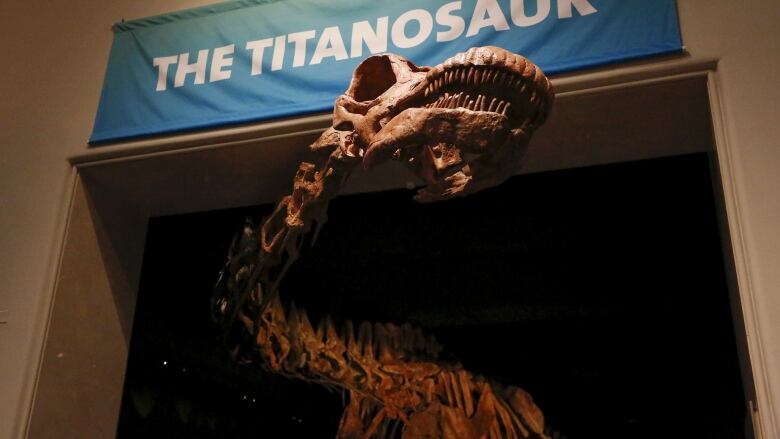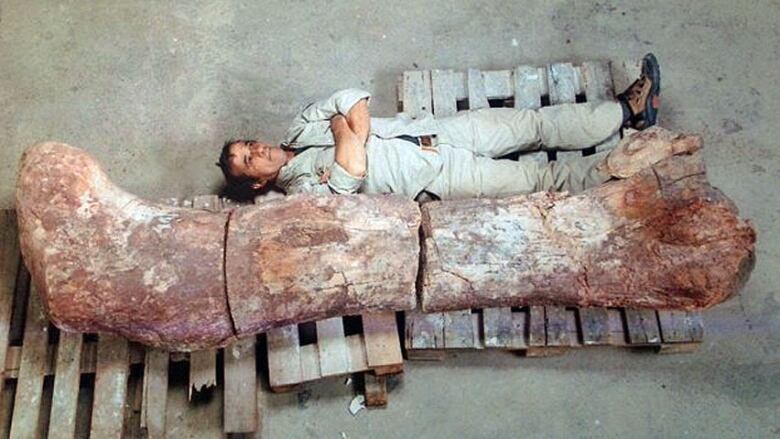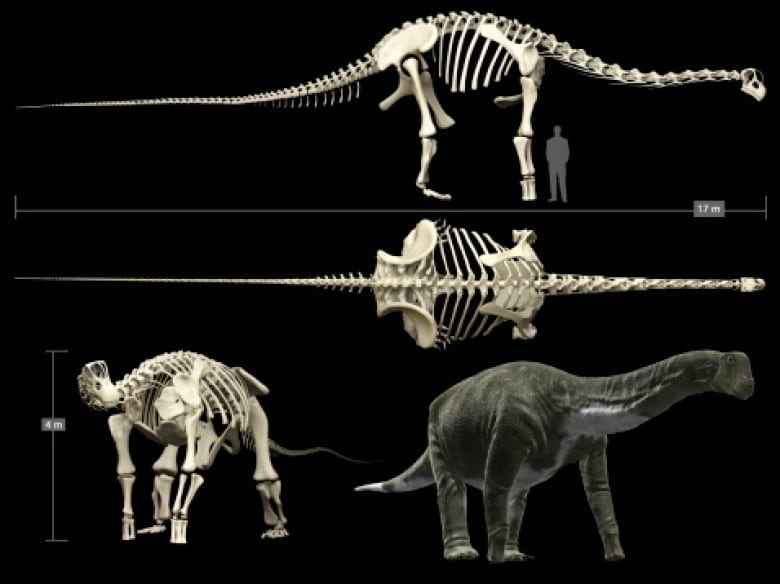Titanosaur, largest dinosaur ever found, recreated by Canadian company
A Trenton, Ontario company made the cast for the 70-tonne, 35-metre long-necked dinosaur

The remains of one of the largest dinosaurs that ever lived are now on public display at the American Museum of Natural History, thanks in part to the work of a Canadian casting company.
The 37-metre skeleton of the dinosaur which has not yet been formally named, but is part ofthe long-necked titanosaur family is so massive that its head and neck stretches out the entrance to the exhibit hall in the New York museum.
"Even beyond the titanosaus, amongst dinosaurs in general, this is the biggest one that anyone has yet found, if the estimates for its size are correct," said Brian Switek, a Salt Lake City-basedscience writer and author of the book My Beloved Brontosaurus.

"This dinosaur is so big that even one of the world's largest museums can't totally hold it in its exhibit hall."
Original bones too heavy to use
A cast of the skeleton was made over a period of six months by Research Casting International, based in Trenton, Ontario, as well as a company in Argentina, where the original bones were found.
Research Casting International is also currently working on casts of a tyrannosaurus and a triceratops for the Smithsonian Museum.
"Paleontologists used to make mounts of the original fossils, but they'd have to destroy some of the fossils in the process, drill holes straight through them. We obviously don't want to do that anymore," he said.
However another reason the original bones couldn't be used is because they're too heavy several times heavier than they originally were because minerals have become deposited inside the bones.

"So if they tried to put up this whole dinosaur with the original fossil material, it would just crash to the floor," Switek said, adding that some of the original fossils are on display separately at the museum.
Switek said is it believed that the bones were found by a sheep rancher in Patagonia, Argentina in 2012.
When paleontologists investigated the site, they found pieces of up to six individual dinosaurs, of a new species they called titanosaur.
'A giant eating machine'
Switek said the biology of the dinosaur is still being studied, but said it is known that these large, 70-tonne dinosaurs were long-necked herbivores ("Think Littlefoot and Littlefoot's mom in Land Before Time").

"Itprobably stomped around the flood plains and forests a 100 million years ago in Argentina, just hoofing down as much vegetation as it possibly could," he said.
"It didn't even chew. It didn't have any mechanism to chew, no molars or anything. It's basically a giant eating machine."
He said all the largest dinosaurs found so far are between 30 and 37 metres in length.
"We seem to be getting multiple dinosaurs in this top size range, so this might represent an upper limit to their biology, either in terms of how fast their nerves can carry information, or how much food they need to eat, or how big a bone can get before it breaks," he said.
"It might be that somebody else finds a bigger one, but if it's bigger it's going to be a matter of measuring down to metres or even centimetres to find a winner."
To hear the full story listen to the audio labelled: Titanosaur, largest dinosaur ever found, goes on display thanks to help from a Canadian company












_(720p).jpg)


 OFFICIAL HD MUSIC VIDEO.jpg)
.jpg)



























































































